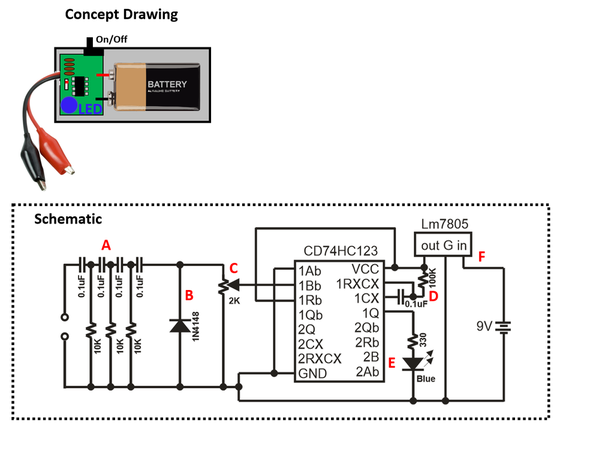After the long thread on weak DCS output signals from the TIUs there was some interest in a simpler tester for those that don't want to finance or support a full oscilloscope. Here is a really simple $10 answer (I priced parts at $9.44 on digikey... battery not included!).
Concept:
It's super simple. The filter [A] extracts the DCS packet. The offset diode [B] makes the voltage go between 0 and 12V (instead of -6V to +6V). The trimpot [C] is a voltage divider and makes it so the DCS amplitude needs to be about 12V to successfully trigger the one-shot. The one-shot pules a blue LED [E] for 1 second set by time base [D]. It runs off a 9V battery that's regulated. [F]
How to use it:
Connect the red and black wires to the TIU port. If the TIU port is good (Vdcs > 12V), the LED will blink. If the TIU port is weak/broken/bad (Vdcs < 12V) the LED will not blink.
I made a breadboard version and it works well. I'm a designer but maybe someone who's both a designer and good at making things (so basically GRJ) might do a pcb with a box if there is interest.









